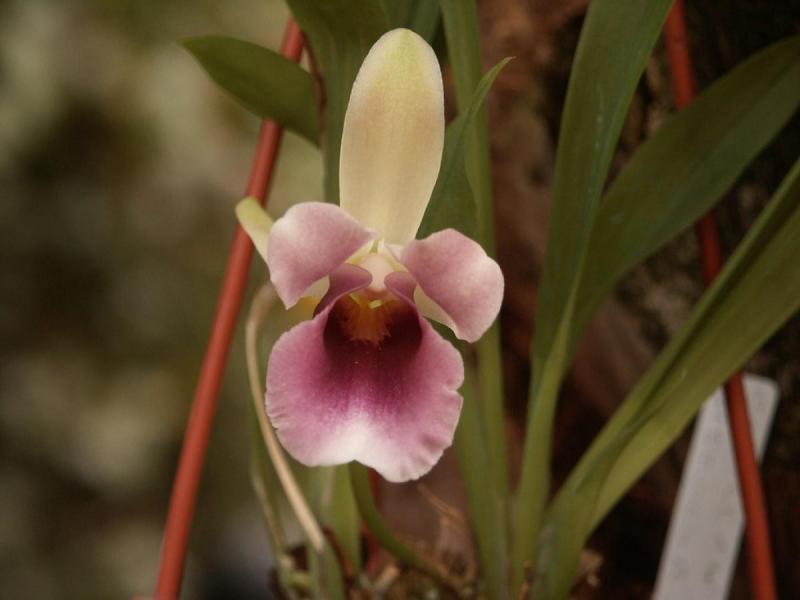Cochleanthes discolor
Also known as: The Different Colored Cochleanthes in the subfamily: Epidendroideae
Native to: Panama Provincia de Alajuela - Costa Rica Provincia de Heredia - Costa Rica Provincia de Puntarenas - Costa Rica
General Information
The Different Colored Cochleanthes is a miniature to small sized sympodial cool to warm growing epiphytic orchid belonging to the sub family Epidendroideae native to Panama and Costa Rica.
Plant Description
Sympodial. Grows to 20-35cm. Each new growth has numerous erect arching, elliptic, lance shaped leaves that grow to 2.5-35cm long
Flowers
A single long lasting, fragrant blossom appears
Fragrance
The orchid is fragrant.
Substrate(s)
- Charcoal
- Treefern
- Spaghnum Moss
- Perlite
Care Notes
These orchids have a fine root system that can quickly die back if left dry for too long, but also does not like to be kept wet, so water regularly but ensure that the mix is dry before watering.
Fragrant:- IsFragrant
Climate
Grows at low to high elevations. Rainfall ranges from 5mm to 305mm per day, heaviest in September and lightest in February. Humidity ranges from 68% to 85%, highest in October and lowest in March. Temperature ranges from 11C to 23C, highest in May (13C to 23C) and lowest in January (11C to 21C).
Watering
These orchids prefer a wet-dry cycle between waterings, they should be watered frequently but only when the moisture is approaching dryness, where the pot feels light and/or the media looks dry. Keep an eye on mounted orchids in warm weather as they may dehydrate quickly.
Fertiliser
Apply liquid based fertiliser per recommended directions. They can benefit from a high phosphate fertiliser leading up to flowering season, followed by a high nitrogen fertiliser when new growth appears, and a balanced fertiliser in other times. These orchids can also tolerate slow release fertiliser applied 1-2 pellets per cup (250ml) of media.
Be sure to flush out excess fertiliser by running water through the media regularly year round. Apply fertiliser regularly at half strength year round. Use a high Nitrogen fertiliser during Spring and Summer. Use a high Phosphorous fertiliser during Summer.Potting
These plants are quite forgiving and will do well repotted ever 2-3 years. The mix should be coarse, well draining, and allow space for air to move and for roots to grow.
Alternatively, these plants will also do well mounted to tree fern or cork slabs, or mounted to trees.
Best time for repotting or mounting the orchids is the end of winter when new growths start to appear. Avoid repotting during hot weather,
Use water retentive media such as moss to prevent roots from drying out quickly This plant does very well in baskets or suspended pots This plant does well mounted. Repotting is best done annually.










